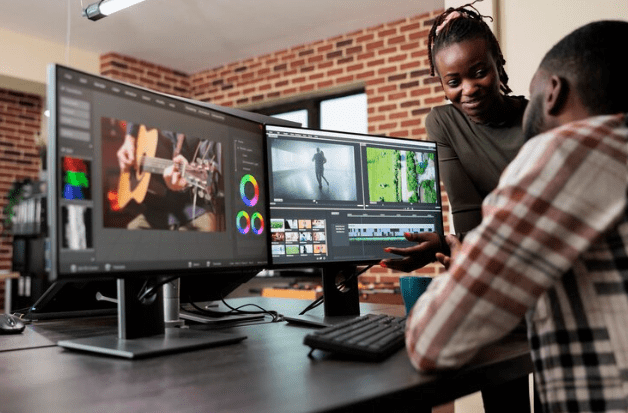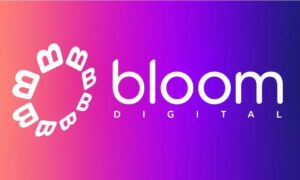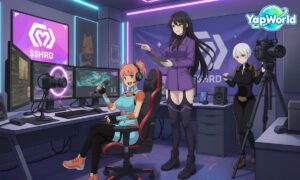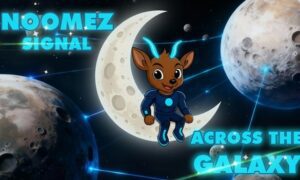For attorneys, presenting a clear, compelling case is everything. Yet in a field laden with dense legal terminology and complex fact patterns, the challenge of effectively communicating all relevant details to judges and juries is no easy task. Information overload can undermine even the strongest of arguments if recipients lack full comprehension. This is where integrating visual storytelling techniques like legal graphics emerges as a viable solution.
This article explores how the legal field uses different graphic mediums and discusses best practices for ensuring visuals complement rather than complicate legal matters.
Bridging The Communication Gap with Legal Graphics
Incorporating specially crafted visual aids tailored to given cases holds promise for mitigating communication barriers and bringing critical information to life. Referred to as legal graphics, these multi-faceted tools span diverse formats such as medical illustrations, forensic recreations, and interactive court presentations. Regardless of medium, the underlying functions remain consistent – condensing complex subject matter into digestible form while maintaining evidentiary integrity.
By distilling mountains of records and testimony into cohesive storyboards, legal graphics facilitate absorption and recall of key details. They lend structure to amorphous concepts, crystallizing points that may otherwise get muddled or missed amid lengthy discussions. Visual storytelling handles complexities in an accessible manner suited to varied learning styles, keeping all audiences fully invested through the litigation process.
Ensuring Visuals Uphold Evidentiary Standards
Of course, maintaining legal defensibility is paramount when incorporating visual elements into proceedings. Attorneys must work closely with experienced designers well-versed in both creative and compliance considerations.
Technical accuracy reigns supreme, as mere extrapolation or speculation can compromise a presentation’s credibility. Consultants skilled in forensic science, medical illustration, and applicable legislation help satisfy stringent evidentiary demands.
Equally important is conveying information through a neutral, unbiased lens that lets facts speak for themselves. Graphic narratives should never introduce new facts or attempt to overtly sway opinion. When executed judiciously, these visual aids bolster understanding without risking legal integrity or overstepping bounds.
Crafting Graphics that Resonate
Of course, visual impact alone does little without emotionally engaging audiences as well. Crafting graphics with empathy, soul, and cinematic flair helps transform dry subjects into compelling dramas that keep viewers riveted. Consultants adept at infusing humanity bring stories to life in a visceral, memorable way.
Techniques like realistic character modeling, immersive settings, and emotionally stirring music lend empathy and scale. Motion graphics that immerse viewers in past events through someone else’s eyes help judges and jurors connect with victims on a human level. Graphics skillfully balancing evidentiary substance with artistic resonance keep attention focused through even the most intricate presentations.
Combining Visual Storytelling with Oral Advocacy
While visual exhibits augment legal proceedings, the two communication forms shine brightest when seamlessly integrated. Skilled attorneys craft presentations treating graphics not as standalone exhibits but tools propelling complex narratives forward. Well-rehearsed narratives flowing naturally between visual elements and oral discourse optimize comprehension compared to disjointed, piecemeal approaches.
Syncing up exhibits’ pacing and sequence with narrative arcs keeps audiences engrossed like a truly cinematic experience. Presenters smoothly navigating between mediums command attention through cohesive, impactful storytelling.
Together, visual and oral advocacy allow lawyers to achieve what no single communication channel could on its own – compellingly conveying each case’s full truth from start to finish.
In Closing
As litigation grows ever more sophisticated, so too must strategies for effectively sharing knowledge. Beyond regurgitating facts, multi-dimensional storytelling with legal graphics proves pivotal. When deftly crafted, visual techniques like medical illustrations, 3D animations and interactive presentations help comprehension without bias or impropriety.
By bridging the communication gap between legal professionals and diverse audiences, visual storytelling achieves what dry text alone struggles to – explaining complex cases in a vivid, cohesive manner everyone can follow.



































